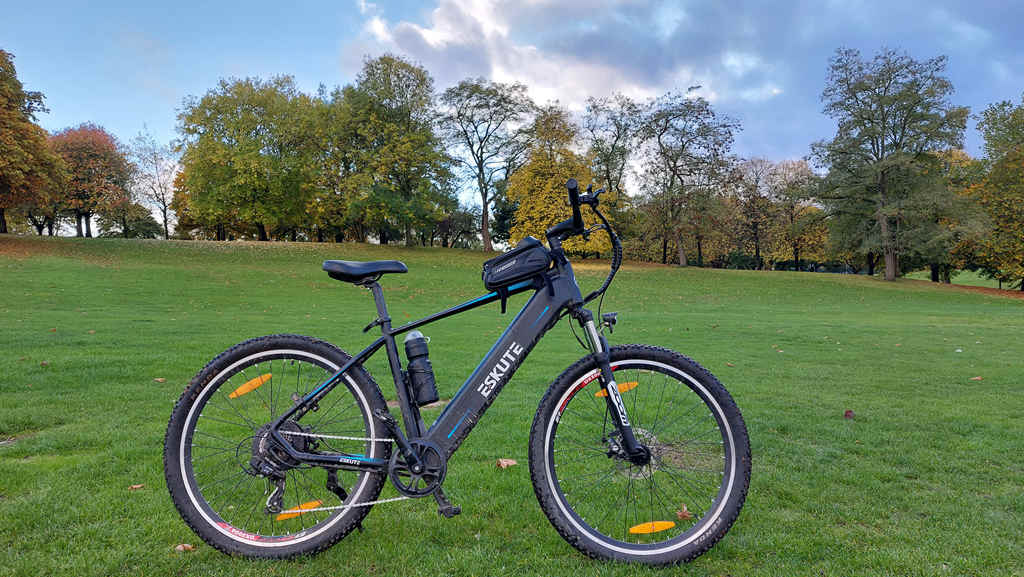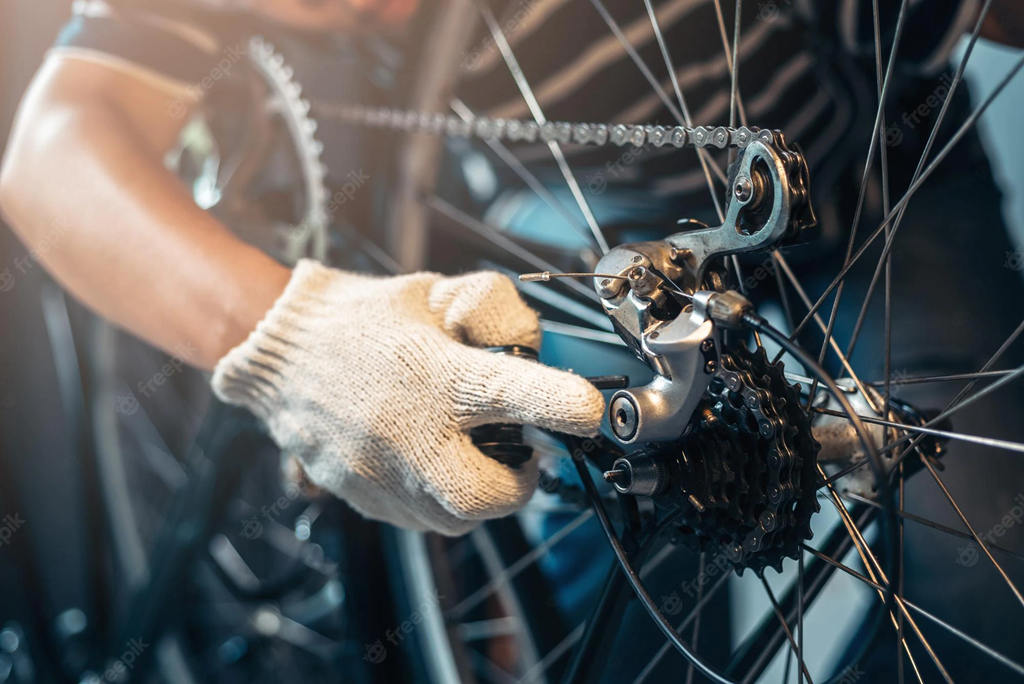Navigation
Prospective e-bike owners often have a checklist containing the features or qualities their e-bikes should have. One thing we are sure these lists don't have is which sensor the bike uses.
In electric bikes, the method used to activate the pedal assist differs. For those who don't know, a torque sensor triggers or sets the pedal assist when the bike attains a particular torque. On the other hand, speed sensors activate the pedal assist when the bike gets to a certain speed. We will look at both sensors, so intending buyers can get a clear idea and decide on which they prefer,
What Is a Pedal-Assist Ebike?
A pedal-assist e-bike is an electric bike in which the electric motor eases the strain of pedalling on the rider. In other words, instead of the rider moving the electric bike by pedalling, the electric motor propels the bicycle through a belt drive or bike chain.
The pedal-assist works because a sensor within the pedal-assist system detects the moment a rider starts to pedal. As soon as the rider triggers the pedalling process, the pedal-assist kicks in, and the e-bike's electric motor begins to provide the power to drive the bike.
How does the pedal-assist system recognise the appropriate speed to match the rider's effort? There are two ways the pedal-assist system does this, either through its torque or speed sensor. Either way, through its sensor, the pedal-assist system knows the necessary power to drive the bike.
One of the primary benefits of having a pedal-assist e-bike is that riding is relatively easy. Typically, mountain riding without pedal assist would take a lot of effort from the rider. Pedal assist minimises the effort required from the rider for both tough and distant rides.
An added benefit to the above point is that since riding is more manageable, it allows people to take more rides leading to a healthier lifestyle. Also, more people on e-bikes means fewer people in carbon-emitting vehicles. In other words, more people on e-bikes means a better environment.

What's A Torque Sensor?
A torque sensor is a tiny device within the electric bike that measures the amount of torque the rider produces. It also calculates the corresponding amount of power the electric motor must have to drive the electric bike.
A torque sensor determines how fast an e-bike goes depending on how much torque or effort the rider uses to pedal the bike. So the faster the pedalling, the higher the speed from the pedal-assist system.
At the lowest pedal-assist level, also known as eco-mode, the torque sensor instructs the electric motor to produce torque slightly higher than the rider's input torque. As pedalling speed increases, the amount of torque the electric motor has is proportionately higher.
The way torque sensor works by instantly calculating the force the rider applies to the pedal through an instrument called a precision strain gauge. The sensor transmits this information to the e-bike's electrical control unit, which then instructs the motor to provide a specific amount of power based on the information gathered by the torque sensor.
Electric bikes with torque sensors make riders feel like superheroes because it magnifies their efforts. An e-bike with an excellent torque sensor might heighten a rider's torque as much as a thousand times.
With a torque sensor, people are guaranteed to get more distance on a single charge than riding an e-bike that uses throttles. An e-bike with a torque sensor only magnifies your effort, so the battery doesn't drain as quickly.
Another benefit of a torque sensor e-bike is that pedalling down a hill or even riding will charge a rider's e-bike's battery in some models. If you have an e-bike with this feature, the rider can sit on the go, giving them further riding range.
Furthermore, having an e-bike with a torque sensor assures the rider of a smooth ride. The ride smoothness is because the pedal assists level available to riders commensurate with their effort. For instance, if they are going uphill now, the pedal assist is higher. Because riding uphill requires more pedalling effort. However, once the terrain levels out or the rider start downhill, the pedal assists level reduces. The speed of the e-bike reduces.
What's A Speed Sensor?

Unlike a torque sensor, a speed sensor sends a signal to the electric motor to power the e-bike immediately after it senses forward movement from the pedals. Speed sensor e-bikes have an uncomplicated mechanism.
The throttles determine the level of pedal assist required to move the bike. So a rider doesn't need to pedal for the bike to drive—the electric motor powers the cycle throughout the journey.
E-bike speed sensors have a small magnet attached to them. This magnet acts like a switch that turns the electric motor on and off.
A speed sensor is easy to use; all the rider has to do to increase or reduce speed is manually set the pedal-assist's level. Also, with a speed sensor, the rider's input in moving the bike is minimal, allowing them to enjoy the ride more.
The simplicity of the speed sensor mechanism ensures that e-bikes with them are relatively cheaper. That is probably why speed-sensor e-bikes are the most popular e-bikes on the market.
Differences Between Both Sensor Types
| Torque Sensor | Speed Sensor | |
| 1 | The torque sensor requires active participation from the rider before the activation pedal-assist system. | Speed sensors only required forward movement from the bike before activating the pedal assistant. |
| 2 | Torque sensors measure the amount of torque produced by the rider. | Speed sensors work with the bike's speed. |
| 3 | Torque-sensor e-bikes are more expensive. | Speed-sensor e-bikes are cheaper and more popular than torque-sensor e-bikes. |
| 4 | You can ride your bikes for longer with torque sensors because they conserve the bike's batteries. Sometimes, tensor sensor e-bikes also charge batteries while the rider pedals. | Speed sensors require more battery use because pedalling is reduced, and the electric motor does most of the bike's movement. |
| 5 | Torque sensors offer more accuracy in the amount of pedal assist required at any particular time. | For speed sensor e-bikes, the pedal assist comes on whenever the rider goes below a particular speed. It is not easily adjustable like the torque sensor. |
| 6 | Torque sensor ebike is more suited to active riders who usually don't mind pedalling. | Speed sensor e-bikes suit older people or people with mobility issues who can't pedal often. |
Conclusion

In summary, both sensors have compelling reasons why you should pick each one. For active riders, who love the thrill of riding, torque-sensor e-bikes are a great way to go. However, for people with mobility problems, having an e-bike with a speed sensor means they can still ride without exerting too much effort.
There's also the question of price; torque sensors are more complicated, so the bikes are more expensive. If price is an issue, go for a speed sensor e-bike.
For those who take biking as an exercise or love to ride longer distances, getting a torque-sensor bike will serve them well like Netuno Pro or Polluno Pro. Suppose you are more interested in passive riding or short distances between the city. In that case, a speed-sensor bike like Netuno or Polluno is preferable. No matter which one you bike, you will surely enjoy the thrill of riding an e-bike. You can also find more information about sensors and e-bikes blogs here.










1 comment
Shon
You’re full of crap
Leave a comment
This site is protected by hCaptcha and the hCaptcha Privacy Policy and Terms of Service apply.